For my final day in Louisiana, I booked two tours of New Orleans so that I could get the tourists highlights and enjoy sight seeing during the 300th anniversary of the city. I drove back down to the French Quarter and got lucky finding parking within walking distance of St. Louis Cathedral. I took in another Sunday Mass there, then headed to my walking tour with Two Chicks Walking Tours, which came highly recommended. We walked around the French Quarter, and the guide provided stories about the area.
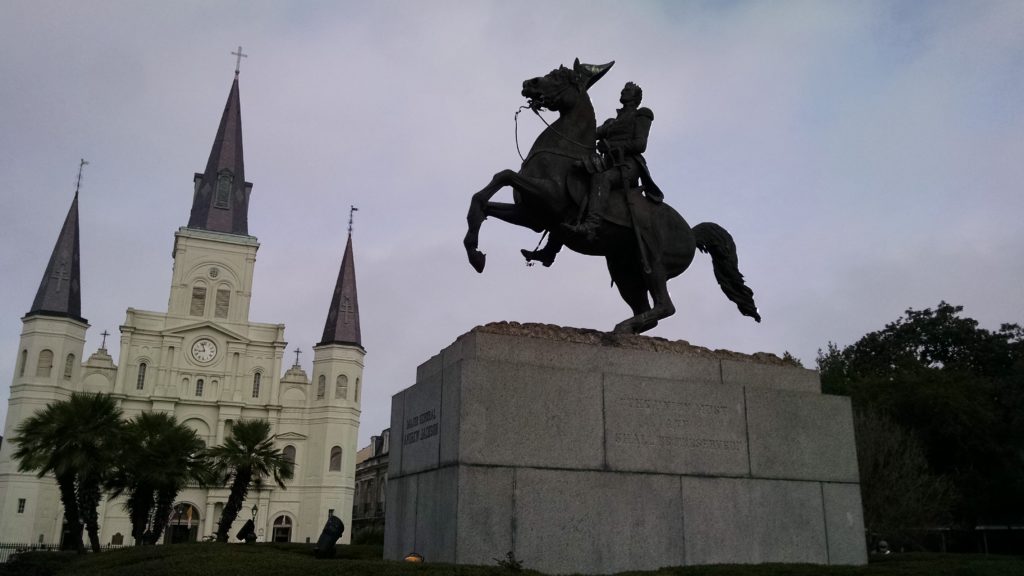
I learned that the statue of Andrew Jackson in the square before the cathedral was an innovation in statuary because the horse (and man on top of it) are balanced on two hind legs. He did not mention it, but the same statue sits in front of the White House in Washington, DC in Lafayette Park, so it has both a grand and familiar quality to it.
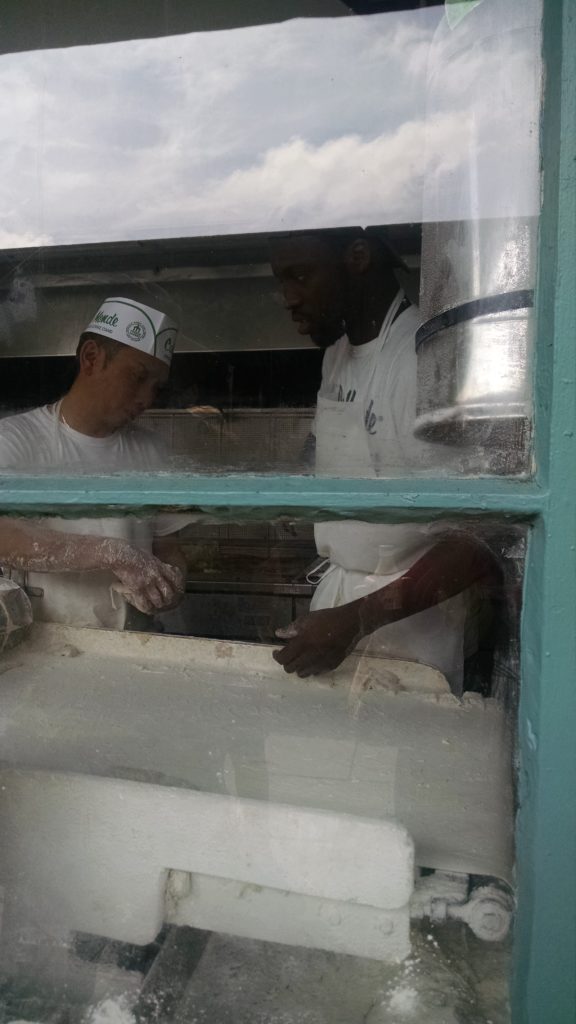
I learned a bit more about the buildings that surrounded the square, and then we made our way to Cafe du Monde, the French Market cafe that made beignets famous. My memory of the tour is that the beignet and chicory coffee business that is now Cafe du Monde was started by a freed black woman, but the website does not mention that, it simply notes that the Acadians introduced beignet to the area. A few more questions of Mr. Google, and it turns out that fried dough traces its ancestry back to ancient Rome, possibly ancient Greece, and the Celts take some pride in claiming them as well. In Kenya, we called it mandazi. Basically, since the invention of fire and across multiple cultures people have fried dough and served it with many things, in this case, ample powdered sugar. I enjoyed watching the workers assemble them before heading on to other sites in the French Quarter.
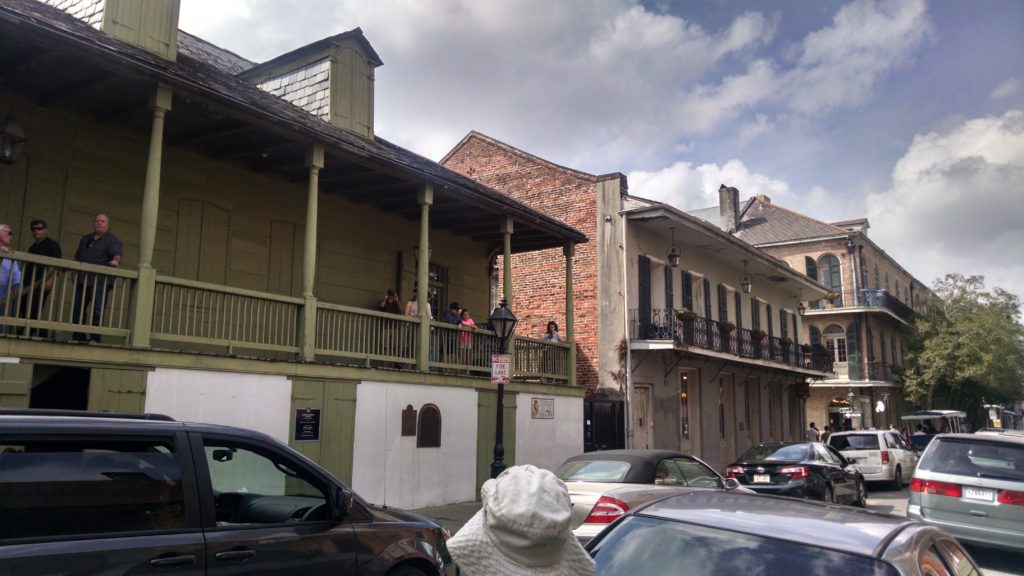
We walked past the Loretto Convent, where the first set of sisters established a school for girls. The guide was excellent, but the day had turned hot and humid and at times, I simply got lost in the architecture of the French Quarter and lost track of which building was the site of which thing. We ended the tour at a coffee and ice cream shop. I wandered around a bit and made my way to the next tour, which was the Dead Sexy Tour because it went to both St. Louis Cemetery No. 1 and the area of licensed vice outside of the French Quarter, both areas I would not likely take on by myself.
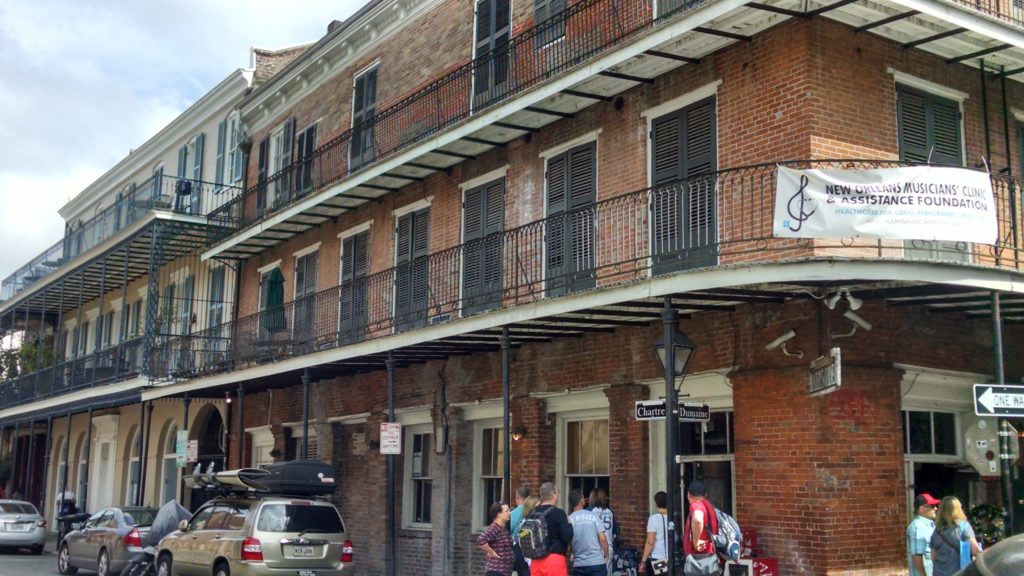
St. Louis Cemetery No 1, established in 1789, is the oldest extant cemetery in the city. It was founded outside the fortified city to improve public health. New Orleans had a history of burying the dead underground, but by 1803, a local ordinance required interment above the water table. In the tradition of French and Spanish practices, St. Louis began memorial interment which enables decay because the hot sun causes the plaster tombs to act as an oven. Family members can be placed in the vault in succession one year after a prior interment because the remains have turned to dust. As a result, the cemetery is still in use today and there is an effort to restore abandoned tombs. Visits are restricted to licensed tour operators, and there is a quota of how many tourists can visit when the cemetery is open. Many notable residents of the area are interred there, and the site is on the National Register of Historic Places.
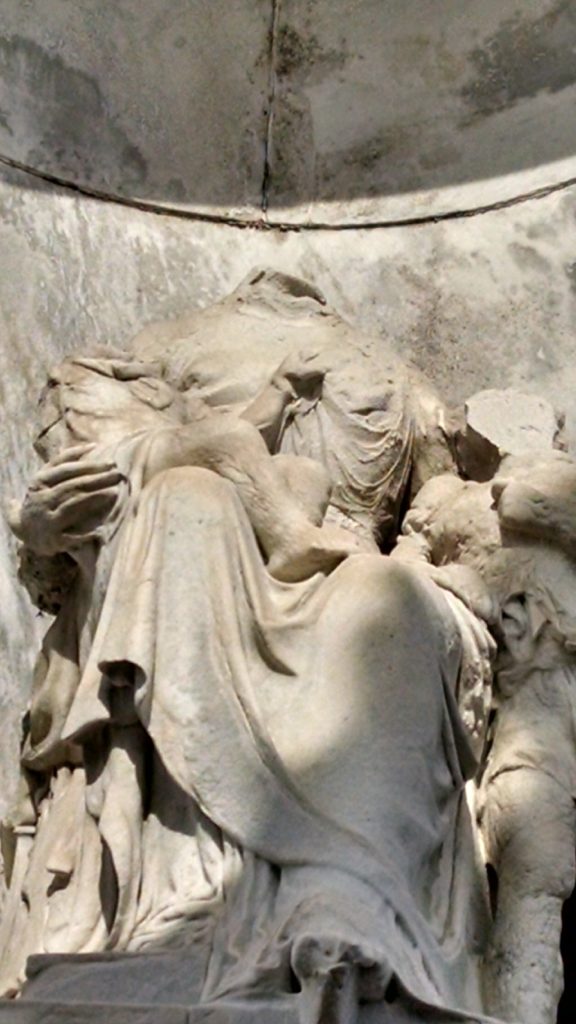
Our tour guide was excellent and perfectly equipped for the sunny, humid New Orleans day with a black lace parasol and ability to tell a story. For this site, there are many to tell. Nicholas Cage has a pyramid vault for himself there, Easy Rider filmed scenes of an acid trip with prostitutes at the vault of the Italian Benevolent Society without permission from the Archdiocese. However, arguably, the most storied grave belongs to Marie Laveau a Louisiana creole midwife, herbalist and practitioner of Native American, African, and voudou spirituality, who died in 1881. She is a figure of considerable folklore, largely it seems, because she sat at the intersection of multiple classes and cultures and was a woman of some power, but much of her history was undocumented. Her vault is marked by X’s because people make wishes and mark it when they visit. Some of the vandalism related to her grave is what prompted the Archdiocese to restrict access to the cemetery. They also have stopped allowing filming there.
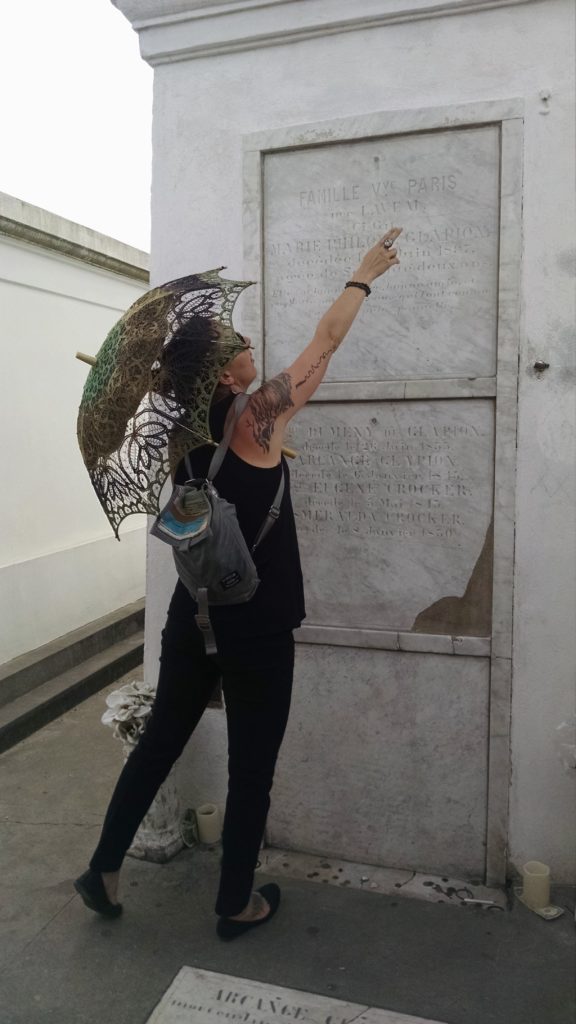
The tour moved from the cemetery to the adjacent district where prostitution and other vices were tolerated, which became known as Storyville after the alderman who wrote the city guidelines for managing prostitution in 1897. The various entertainment venues there often hired African-American musicians to play, which enabled the rise of jazz. In the midst of World War I, the federal government restricted prostitution, so Storyville fell into decay and many of the original structures were torn down and replaced with housing projects. We made our way to May Bailys Place, a bar which had served as a bordello and has some of the photos and documents of the era on display.
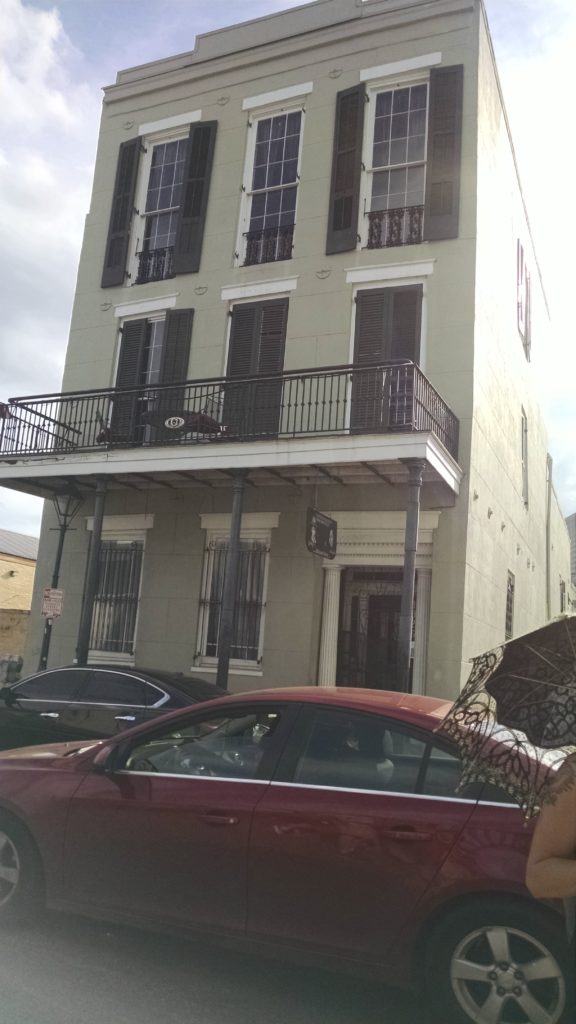
It was cool there, and I decided to order a coffee-rum drink while I listened to the last stories of my tour. I had been carefully drinking water all day in the hot sun, and figured that the drink would be like many rum and cokes I have drunk in the course of my life–the rum would be minimal and the coke abundant. In this case, I don’t remember the coffee. The drink hit my dehydrated body and empty stomach at full force. The tour ended. It seems appropriate that I would spend my remaining few hours navigating New Orleans more intoxicated than I have been since college like so many have before me. Early on, I sat down in the courtyard of a hotel with my bottle of water and dialed a friend who kept me from drunk dialing exes of folks I should not talk to when my inhibitions are lowered. The water helped, but there had been a lot of rum to soak up. My time in the city was short, and there’s only so long I could pretend I belonged at this hotel. I began walking and mentally thanking the city planners who had created a grid pattern. I reached out to my B&B buddy Liam to make dinner plans. I made my way back to the French Market to buy beignets to share with my hard-working colleagues when I returned home. Cafe du Monde operates on a cash only basis, so off I went to an ATM and managed not to empty my bank account or get robbed of cash while intoxicated. Liam and I were struggling to communicate. I think he was taking in some music and the battery on my phone–which had to navigate me back to my hotel still–was dying. I headed to the restaurant he suggested for dinner and ordered. The food sobered me up, but I don’t remember the name of the place or what I ate–except that the salad came with Green Goddess dressing. It was nice.
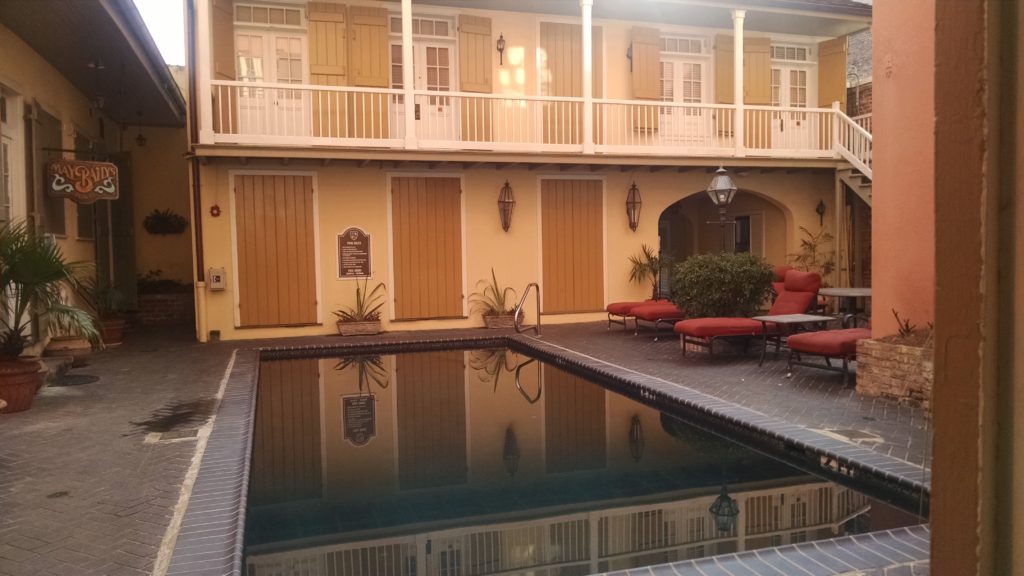
It was getting dark quickly, my phone had virtually no life, and still no Liam. The wait staff suggested a drink, but I was sober enough to drive at that point and had an early flight. With no way to reach Liam directly to confirm he was coming, I cut my losses and headed to the hotel. Once plugged in, I had messages from Liam at the restaurant. He was just starting his night and I was preparing for an early morning. I stayed in and packed. I hope he had fun.
It was a memorable way to end my time in New Orleans. Like all states, I left it with so much more to see and do, particularly in New Orleans. I hope to return.
